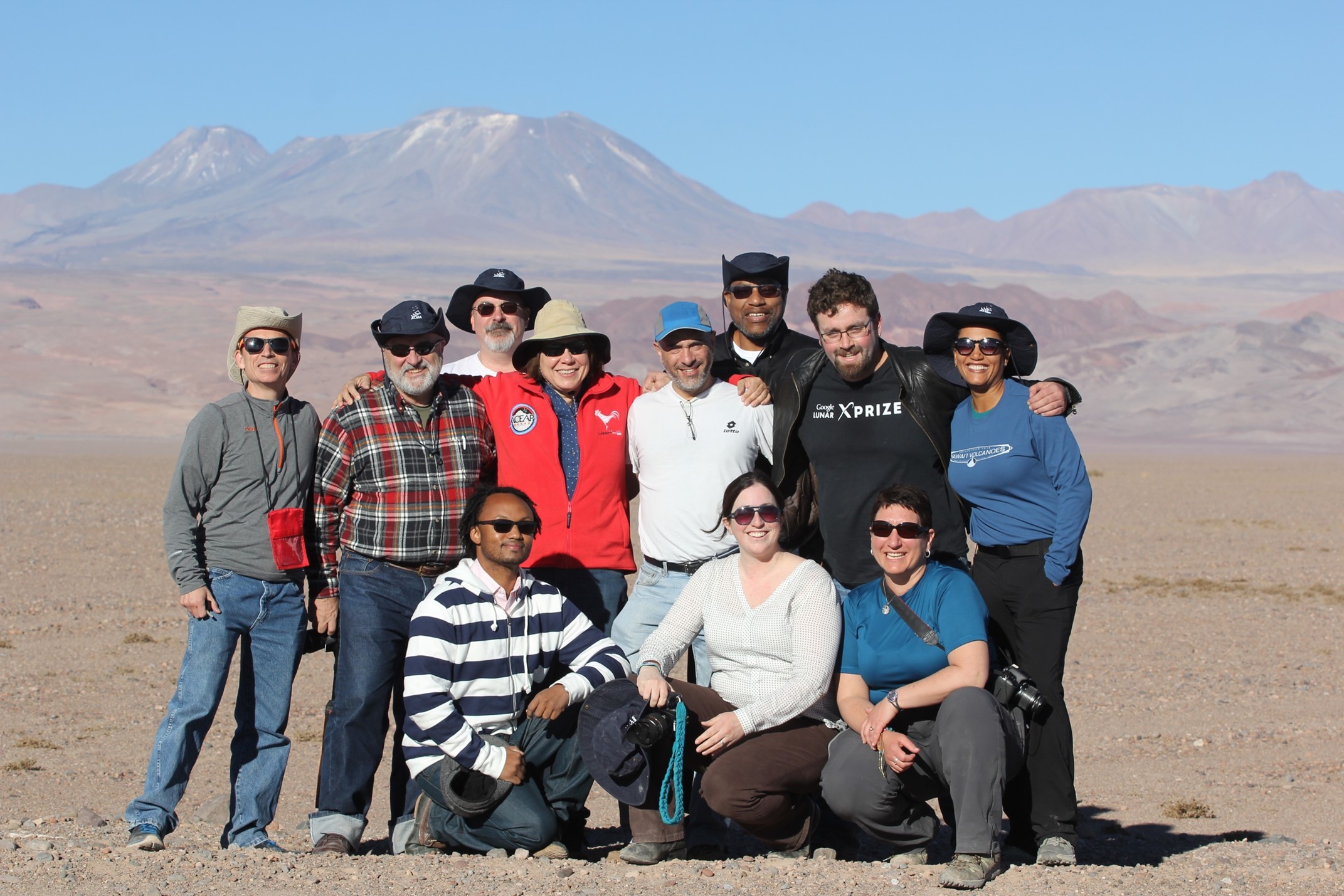The U.S. National Science Foundation National Radio Astronomy Observatory (NSF NRAO), in partnership with several leading Mexican universities and research institutes, has announced a series of landmark agreements and meetings aimed at advancing Mexico’s role in the Next Generation Very Large Array (ngVLA) project.
Recent News
Astronomers Discover a Superheated Star Factory in the Early Universe
Astronomers have uncovered a previously unknown, extreme kind of star factory by taking the temperature of a distant galaxy using the ALMA telescope. The galaxy is glowing intensely in superheated cosmic dust while forming stars 180 times faster than our own Milky Way.
Astronomers Share Largest Molecular Survey To-date: GOTHAM Legacy Data Goes Public
Astronomers in the “GBT Observations of TMC-1: Hunting Aromatic Molecules” research survey, known as GOTHAM, have released a spectral line survey with largest amount of telescope time ever conducted, charting more than 100 molecular species only found in deep space.
Applications Accepted for 2022 Astronomy in Chile Educator Ambassadors Program

ACEAP Ambassadors. Ambassadors visit the Atacama Desert following a successful visit to the ALMA high-site at 16,500 ft. Photo by Tim Spuck (AUI/NSF).
Applications are now being accepted for the 2022 Astronomy in Chile Educator Ambassadors Program (ACEAP). Visit – http://astroambassadors.com/
This program, in its 7th year, brings amateur astronomers, planetarium personnel, and astronomy formal and informal educators to U.S.-funded astronomy observatories in Chile. While there, ambassadors receive behind-the-scenes tours of some of the world’s most productive and advanced telescopes, including in-depth information on their instruments and discoveries. Prior to the ACEAP Expedition, participants engage in professional development activities designed to improve STEM communication and education. The aim of ACEAP is to share the wonders of astronomy with students, the general public and space enthusiasts while building awareness of the amazing resources, facilities, and data in Chile, that can be accessed from anywhere. ACEAP ambassadors play a key role in achieving these goals.
Ten ambassadors will be selected for the Expedition with specific travel dates TBD. This nine-day expedition (not including travel time between the U.S. and Chile) will include stops at the Cerro Tololo Inter-American Observatory (CTIO), the Gemini South telescope, Vera C. Rubin Observatory, and the Atacama Large Millimeter/submillimeter Array (ALMA). In addition to the professional facilities, ACEAP ambassadors will visit smaller amateur/public observatories. Weather permitting, nighttime observing opportunities will be made available.
This unique professional development experience has become known for:
- Providing unique access to facilities and people, and the astronomy ecosystem,
- Bringing together people with diverse backgrounds and skills from both formal and informal education communities,
- Investing in the Ambassadors: activities don’t stop at the end of the expedition or year of involvement,
- Creating a network that continues to branch out and engage in innovative activities,
- Providing a creative space for participants to interact.
Anyone, including international participants, may apply for five positions that are fully supported by their institution and/or personal funding. The remaining slots are restricted to U.S. citizens and permanent residents or Chilean residents who are amateur astronomers, K through college formal and informal educators who teach astronomy as part of their curriculum or program, planetarium educators, or those working in the area of astronomy communications.
To learn more about the program and to apply, go to:
http://astroambassadors.com/
You can also visit us on Facebook at:
https://www.facebook.com/AstronomyAmbassadorsProgram/
The deadline for applications is 11:59 p.m. (applicant’s local time), 31 May 2022.
Contact: Yasmin Catricheo at [email protected] or Tim Spuck at [email protected]
ACEAP is a collaborative project of Associated Universities, Inc., the National Radio Astronomy Observatory, Association of Universities for Research in Astronomy (AURA), and NSF’s NOIRLab including Cerro Tololo Inter-American Observatory, Gemini Observatory, and Vera C. Rubin Observatory. ACEAP was initially funded in 2015 as a two-year pilot program by the National Science Foundation (NSF). Due to its success, a combination of institution, personal, and NSF funding have allowed the program to continue.
Recent News
NSF National Radio Astronomy Observatory and Mexican Institutions Sign Historic Agreements to Advance ngVLA Collaboration
The U.S. National Science Foundation National Radio Astronomy Observatory (NSF NRAO), in partnership with several leading Mexican universities and research institutes, has announced a series of landmark agreements and meetings aimed at advancing Mexico’s role in the Next Generation Very Large Array (ngVLA) project.
Astronomers Discover a Superheated Star Factory in the Early Universe
Astronomers have uncovered a previously unknown, extreme kind of star factory by taking the temperature of a distant galaxy using the ALMA telescope. The galaxy is glowing intensely in superheated cosmic dust while forming stars 180 times faster than our own Milky Way.
Astronomers Share Largest Molecular Survey To-date: GOTHAM Legacy Data Goes Public
Astronomers in the “GBT Observations of TMC-1: Hunting Aromatic Molecules” research survey, known as GOTHAM, have released a spectral line survey with largest amount of telescope time ever conducted, charting more than 100 molecular species only found in deep space.
